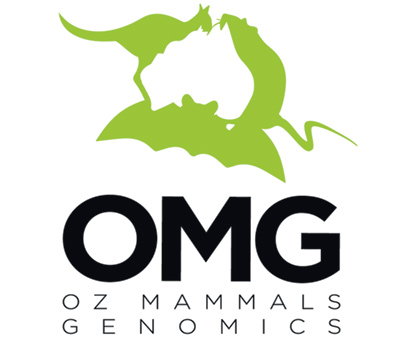Northern quoll conservation genomics
Genomic diversity assessment of the northern quoll (Dasyurus hallucatus)
The northern quoll is a charismatic marsupial predator with a formerly large range in northern Australia (Qld, NT and WA) that has declined drastically in recent decades. The species initially disappeared from the grassland and savanna parts of its range, associated with inappropriate fire regimes and increased predation pressure, and has recently suffered dramatic population crashes due to the arrival of the highly toxic cane toad, which continues to spread across the range of the northern quoll (Hill and Ward, 2010). The species’ range is highly fragmented, and it now persists mainly in rocky areas. It is currently listed as Endangered under the Federal EPBC Act and by the IUCN.
Up to four sub-species of northern quoll have previously been recognised (though none are currently; Burbidge et al., 2012). Mitochondrial analyses indicate strong phylogeographic structure across the Kimberley, NT and Qld, with the Pilbara lineage as sister to these (Woolley et al., 2015) raising the question of whether the Pilbara should be considered a distinct sub-species. Further, there is also morphological variation amongst northern quoll populations (Umbrello, 2018). Additional nuclear data is required to further understand the relationships of genetic and morphological variation amongst populations to address taxonomic issues in the species.
This project will collate samples from the many genetic and ecological research projects on the northern quoll to generate ddRAD and exon capture data across the range of the species. The data will enable mapping of phylogenetic lineages and assessment of genetic diversity and structure across the species’ distribution. Suitable data are currently not available, as individual projects on the northern quoll have used different sequencing or genotyping approaches and have typically only sampled a subset of the range of the species.
Project coordinators:
- Sam Banks (Charles Darwin University)
- Ben Phillips (University of Melbourne)
- Kym Ottewell (Department of Biodiversity, Conservation and Attractions, WA)
- Diana Fisher (University of Queensland)
Project collaborators:
- Brydie Hill (DENR, NT)
- Ian Radford (Department of Biodiversity, Conservation and Attractions, WA)
- Peter Spencer (Murdoch University)
- Chris Burridge (University of Tasmania)
- Mark Eldridge (Australian Museum)
- Brett Murphy (Charles Darwin University)
- William Ross (Charles Darwin University)
- Linette Umbrello (Western Australian Museum)
- Kenny Travouillon (Western Australian Museum)
- Anna MacDonald (Australian National University)
- Stephen Frankenberg (University of Melbourne)
- Skye Cameron (University of Queensland)
